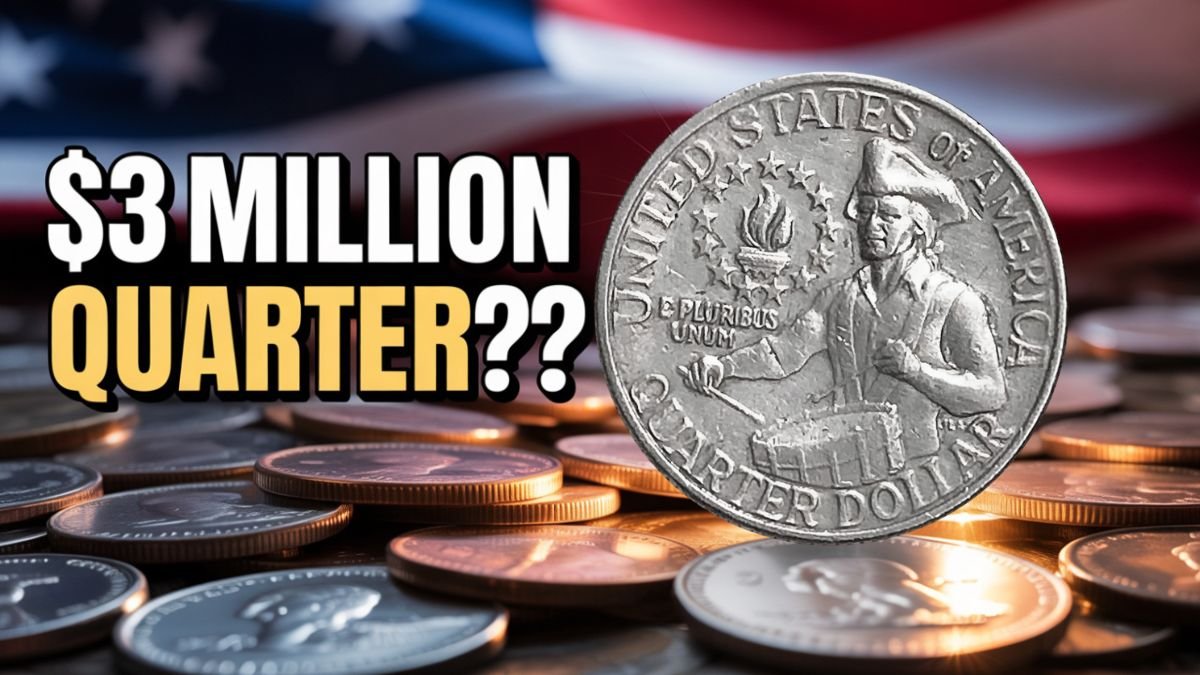Introduction: Have you ever looked into your wallet or box of old coins and wondered if one of these coins could change your fortunes? If not, now is the time! The US 1976 Bicentennial Quarter is not just an ordinary coin — some of its rarest editions can be worth up to $3 million (roughly Rs. 25 crores) today. Let’s find out why this coin is special, how to identify if you have that rare edition, and what to do if you do find it.
WWhat is special about 1976 Bicentennial Quarter?
In the year 1976, special quarter coins were manufactured in memory of the fact that America was celebrating her 200th independence anniversary. Theses coins were redesigned as a mark of this historical occasion.
Key Features:
- Date: Imprinted “1776–1976”
- Design: A ‘drummer boy’ playing a drum in place of the eagle on the reverse
- Minting: Over 1.6 billion coins were produced, making it a common occurrence
Although most Bicentennial quarters are only worth their face value, some special versions have become exceptionally valuable due to their rarity and minting errors.
Which version is worth $3 million?
There is one special kind of Bicentennial quarter that has fetched prices of up to $3 million among collectors. Following are some of its key features:
- Coin made of 40% silver: Originally available only in collector sets
- If you find such a coin in the open market or in your pocket, it is very rare
- Proof error coins: High-quality proof coins that accidentally came into circulation
- These have a mirror-like shine
- Coins with minting errors: Double strikes, off-center strikes or other defects
- High-grade coins: If the coin is in MS68 or higher grade, it can be worth millions of dollars
- No mint mark and rare die combinations: Some coins have no mint mark (like ‘S’, ‘D’ or nothing at all), which makes them more valuable
How to identify rare Bicentennial quarters?
If you have a 1976 quarter, pay attention to these special things:
- Date: Should be marked “1776–1976”
- Check the mint mark: ‘S’ – San Francisco Mint
- ‘D’ – Denver Mint
- No mint mark – Philadelphia Mint
- Edge: Normal clad coins have a copper strip
- The edge in the silver version looks like a uniform silver
- Check the weight Clad quarter: Approximately 5.67 grams
- Silver quarter: Approximately 5.75 grams
- Proof finish: Mirror-like shine and refined embossing indicate proof quality
- Errors: Double design, blurred contours, off-center strikes, etc.
What to do if you think you have a rare coin?
If you think you have this valuable Bicentennial quarter, follow these steps:
- Do not clean the coin: Cleaning can decrease its value.
- Use a digital scale for accurate weighing:
A difference of even .08 grams can be significant. - Do a magnet test: A silver coin will not stick to a magnet.
- Get a professional grade: PCGS ( Professional Coin Grading Service)
- NGC (Numismatic Guaranty Company)
- Seek a phone call to a good coin dealer: Go to an old coin show or minting collector club
Does such coin exist?
Yes! The possibilities are not non-existent, but not high. These rare coins at times turn up in old mint sets, inherited collections, or bank rolls.
Conclusion:
The 1976 Bicentennial quarter is a coin that can change your financial situation, not just represent American history. Every coin in your pocket tells a story — and that story could be worth millions.
FAQs
Q1. What is the 1976 Bicentennial Quarter?
A. The 1976 Bicentennial Quarter is a U.S. commemorative coin minted to celebrate the 200th anniversary of American independence. It features a unique “1776–1976” date and a drummer boy on the reverse.
Q2. Why is some Bicentennial Quarter worth up to $3 million?
A. Only a few versions are incredibly rare due to minting errors, being made of 40% silver, or having exceptional grading (like MS68+). These factors make certain quarters highly valuable to collectors.
Q3. What does “MS68” mean?
A. MS68 is a Mint State coin grading level. It signifies a coin in near-perfect condition — almost flawless — which is extremely rare for circulated coins.
Q4. Where can I find these rare quarters?
A. Check old coin collections, mint sets, or inherited jars. Sometimes rare coins even appear in pocket change or bank rolls.
Q5. Should I clean the coin to make it look better?
A. No. Never clean a coin. Cleaning can damage the surface and drastically reduce its value.
